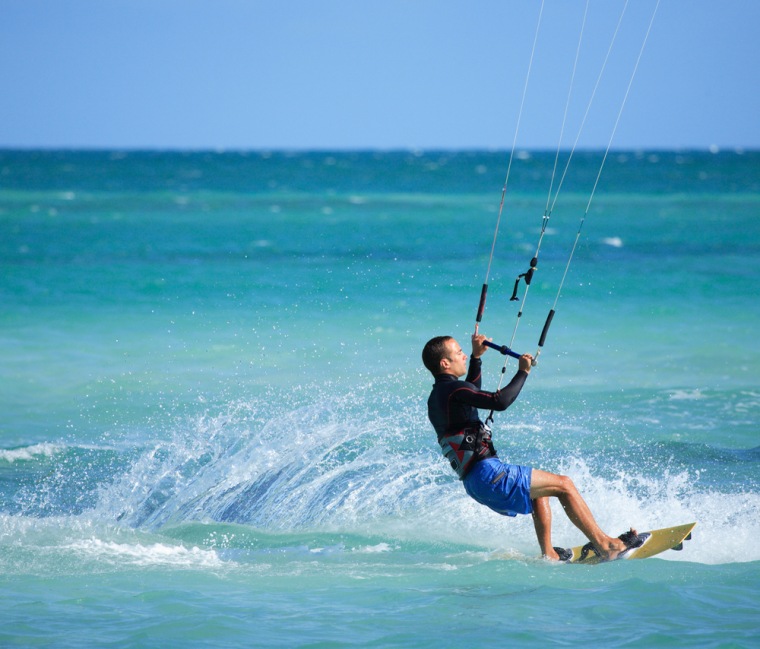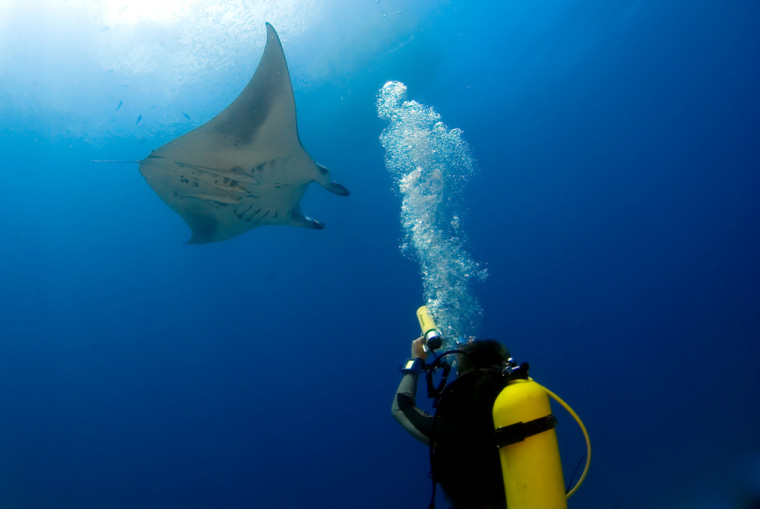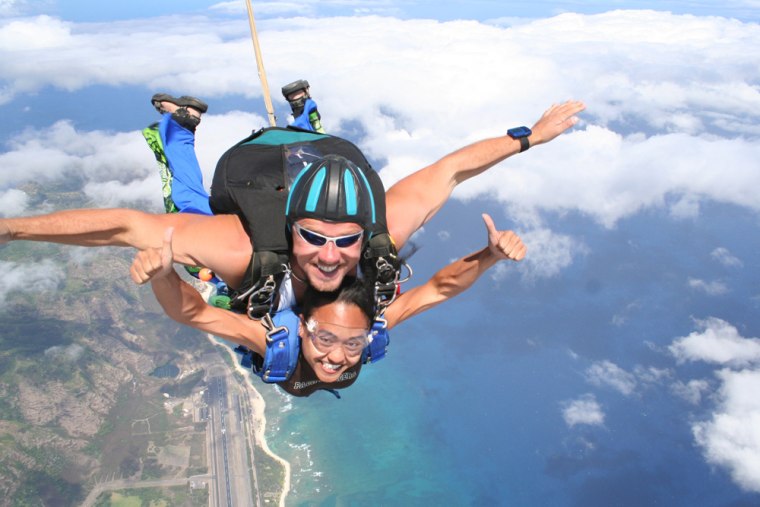The water is blue, and the sand is soft—which is lucky, because that's what the newbie kiteboarder will be picking out of his cheekbones after getting dragged down Maui's Kanaha Beach behind a massive kite for what seems like an eternity. Long a favored haunt of windsurfers, the long stretch on Maui's North Shore now is the training ground for adventure wackos willing to strap their feet into a short, fiberglass board and strap on a billowing kite that can easily send them sailing 40 feet into the air above the pounding surf.
"Hang on and don't worry," the instructor shouts to the flailing student, "You almost got it. And look out for the rocks. Not that you are going to hit them."
The North Shore of Maui, where Kanaha is located, is the epicenter of the kiteboarding universe, home to wickedly strong winds that blow in a favorable direction parallel to the shore. Big surf also bashes this exposed stretch of coastline, which is also home to the legendary tow-in surf break Jaws. True, the kiteboarding crowd is far more mainstream today than a decade ago, when equipment was more finicky and basic safety measures such as quick release mechanisms for kites did not exist. But it still takes a special kind of individual to entrust life and limb to a kite as big as a small car, then pull an Icarus.
"Here, if you blink you are going to get seriously yanked. You have to have fast reaction times and really pay attention to what's going on," says Martin Kirk, owner of kiteboard instruction company KS Maui, who says clients come from all over the world to turn and burn at Kanaha.
They're not alone. Hawaii is a world-class destination for any number of watersports and the islands attract adrenaline junkies by the planeload. "It's just a place where there are so many things that you can do within a really small area that it's kind of overwhelming. You can go from massive surf to catching a huge fish to diving pristine reefs pretty much in the same day," says John Clark, an author of several beach guides and a respected local waterman. On the Kona Coast of the Big Island, the water is calm 350 days per year and the ocean depth drops from 50 feet to 2,000 feet within a mile of the coast.
Translation? Some of the best, most consistent marlin fishing on Earth. "You can get a massive strike only a few hundred yards out from the harbor," says F. McGrew Rice, the captain of the Ihi Nui and a regular winner of jackpot fishing tournaments on the Kona Coast. Case in point: In June 2007, Rice departed Kona's Honokohau Harbor at 6:30 a.m. on a charter. An hour later he was back at the dock weighing an 800-pound blue marlin. "It bit our line as soon as we cleared the breakwater," laughs Rice.

Not all Hawaii adventures are this convenient and accessible. Kayaking the Na Pali Coast on Kauai, a pristine stretch of coast boasting multiple lush valleys bedecked with isolated beaches and towering waterfalls, is a full-day, dawn-to-dusk enterprise (there are no roads and the only other access is via helicopter or on a long hiking trail). Dropping into waves at Egusas, a big-wave break on the remote West Side of Molokai where you'll likely surf alone, requires either a full-day boat charter from Ma'alaea or Kaunakakai or a long, bumpy ride across the private pastures of Molokai Ranch, the big landholder that controls road access to the water on that side of the island. And a hike to 400-foot Wamoku Falls on Maui, via the Pipiwai Trail, is a muddy slog through a bamboo forest that runs four miles round trip, although the veil-thin, shimmering cataract at the end of the trail is well worth the hike. Just make sure it doesn't look like rain, since this trail can turn into a raging flood zone in a heartbeat. Gulp.

Says Sage Spalding, a Hawaii surfer and sailor who teaches visitors how to sail traditional Hawaiian sailing canoes, "There are beautiful places in the world but Hawaii is so different. It's got all the hotels and people think it's crowded but in fact the islands are still really wild and untamed. When you're out there sailing, you can feel it."
Spalding sees giant humpbacked whales in close proximity all the time, a normal part of life on the water in Hawaii, where they spend winters mating and frolicking. The islands also happen to be one of the only places on Earth where you can get within 10 feet of a manta ray on a regular basis. These shockingly graceful giant marine creatures congregate off of Keahou on the Big Island in shallow waters.
Says Keller Laros, the founder of the Manta Pacific Foundation and a divemaster who leads manta ray night dives, "People are completely blown away to see a wild animal with a wingspan of 12 feet fluttering inches away from their masks. It's like having a buffalo come up and rub against your leg." Where the manta rays roam and the big waves foam, Hawaii's got all your adventure needs covered—and then some.
